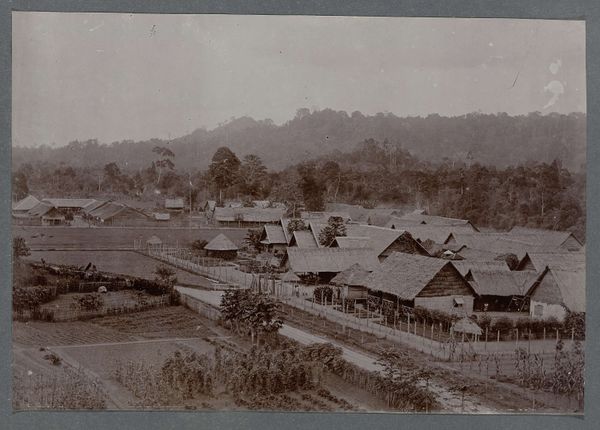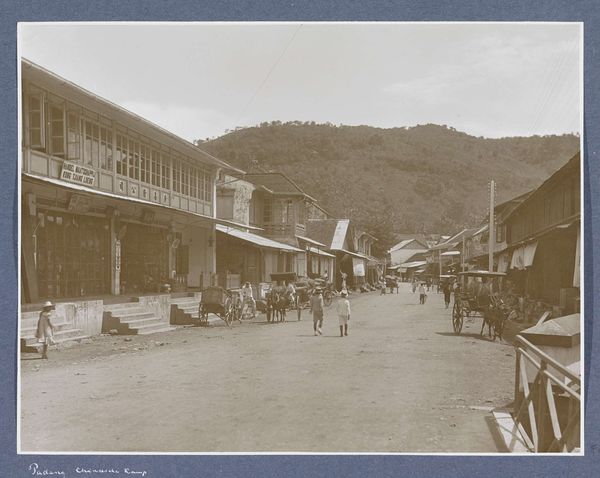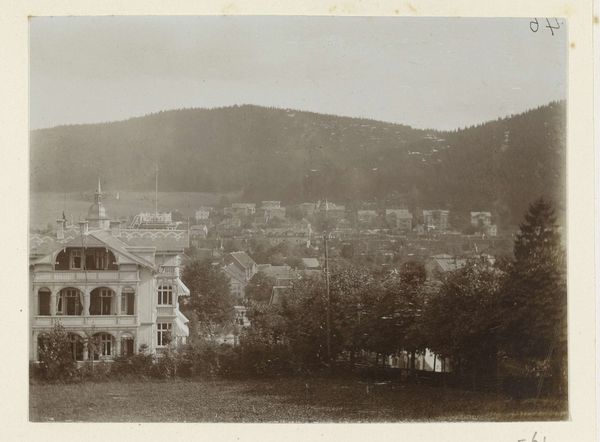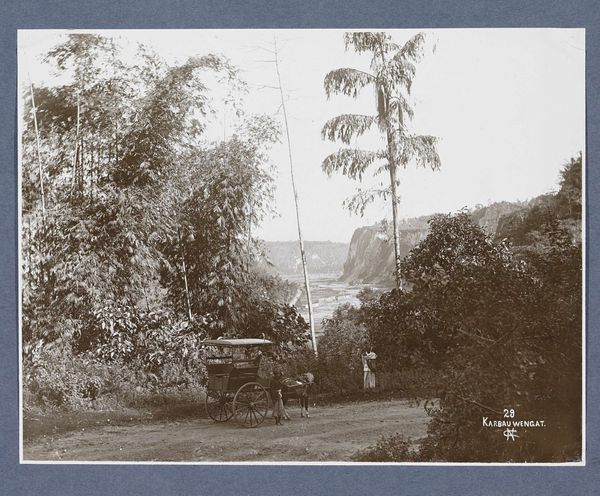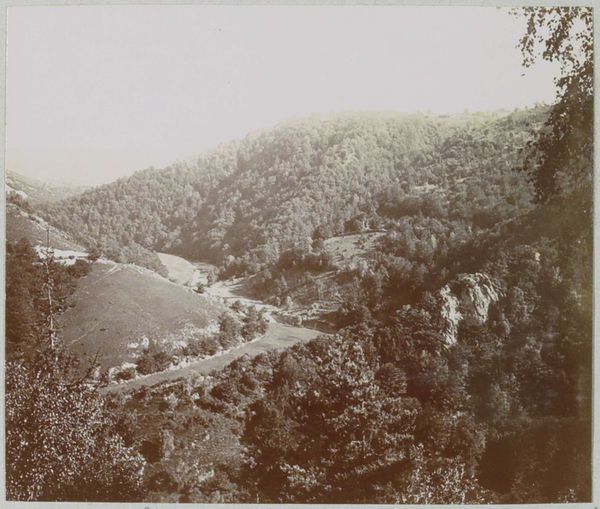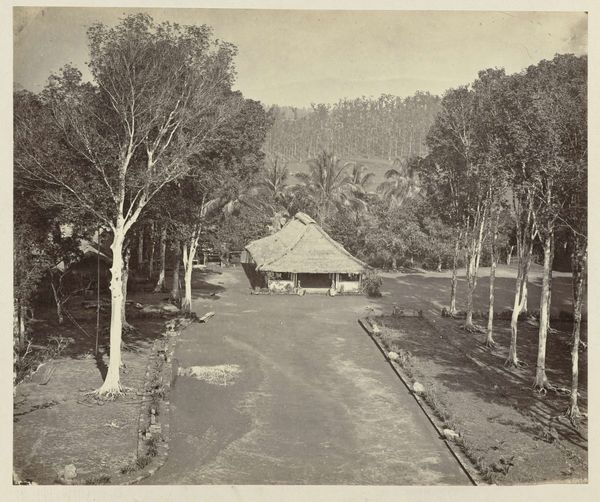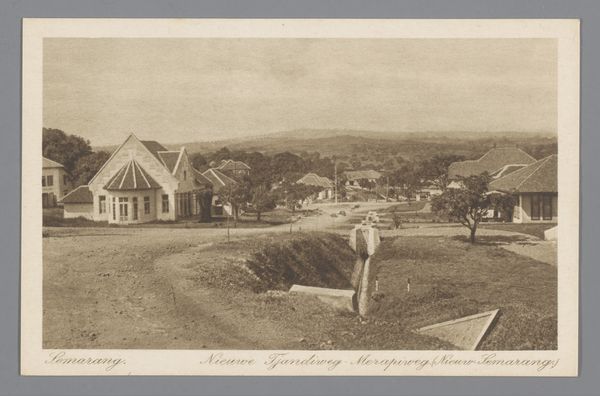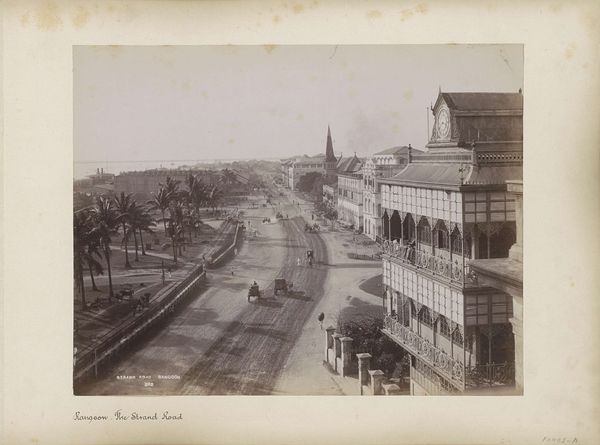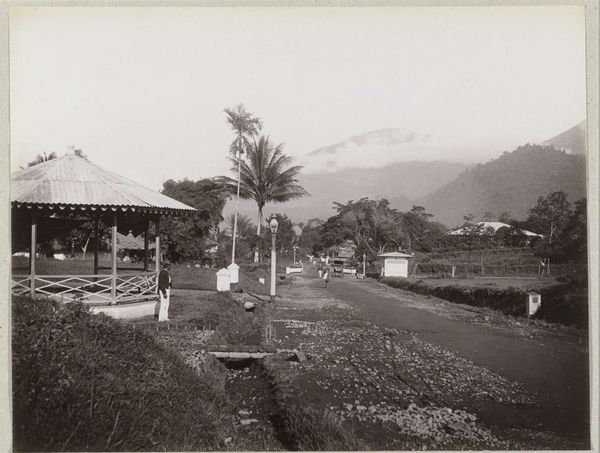
photography
#
african-art
#
photography
#
orientalism
#
cityscape
#
realism
Dimensions: height 208 mm, width 289 mm
Copyright: Rijks Museum: Open Domain
Curator: It's quiet, almost melancholic, isn't it? Like a sepia-toned dream. Editor: Indeed. What we have here is a photograph titled "Ingang van de Chinese Kamp in Padang," or Entrance to the Chinese Camp in Padang. The photographer is Christiaan Benjamin Nieuwenhuis and it likely dates from between 1900 and 1920. It's part of the Rijksmuseum collection. Curator: “Camp” feels… loaded. Did it feel like a place of refuge, or constraint? I get the feeling that the subjects were restricted from fully living the "cityscape" due to marginalization and spatial containment. Editor: That's an insightful point. "Camp" is absolutely a term rife with colonial-era power dynamics. In this context, the Chinese "camp" or quarter in Padang would have been a designated area, often reflecting both economic segregation and social control by the Dutch colonial administration. It represents how these communities were spatially managed, influencing social interactions and cultural expressions within its boundaries, very different from that building with white columns on the left. Curator: Exactly, like a city within a city, subtly barricaded. The eye goes right to the buildings in the foreground – all that bright geometry! They draw you in, promising something... different, somehow, from the quiet routine suggested by the few figures strolling further down the road. Even the tropical forest background is subdued. Editor: It’s a superb example of orientalist photography, framing a very specific vision of Southeast Asia for a Western audience. Note the composition – the perspective leads our eye deliberately, crafting a narrative of order, control, and a pre-determined understanding of "the other." Curator: Hmm, so the stillness almost serves a purpose. Not just capturing a place, but building an idea of a place. And is the composition meant to highlight that grand edifice? Editor: It serves to symbolize power and progress of Western influence over that landscape. However, the details offer nuanced readings of the situation. The residents’ presence suggests that, despite spatial segregation and social controls, these populations persevered to exist as part of Padang. This work opens a window into a past rife with political meaning-making. Curator: What’s your final reading then? I feel a slight discord. Between the quiet imposed, and a hum underneath. It’s there, a kind of... resilience captured amidst control. Editor: My feeling aligns. A testament to resilience subtly asserting itself amidst the overwhelming presence of a controlling colonial gaze. These glimpses invite us to engage critically and imagine stories beyond a pre-scripted orientalist viewpoint.
Comments
No comments
Be the first to comment and join the conversation on the ultimate creative platform.
